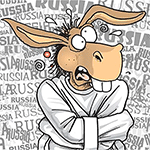The Hawaiian steel guitar changed American music. Can one man keep that tradition alive?
Published in Lifestyles
"If I give this to you, will you practice?" he asks.
After a pause, Cortez answers: "Yes."
::
Nearly all the legends trace the invention of the Hawaiian steel guitar back to Joseph Kekuku in the 1880s.
In one retelling, the young teen was walking along railroad tracks in Oahu when he decided to run a stray bolt or spike along his guitar strings, eliciting a primitive version of what would later become a smooth signature slide. In others, he utilized a metal comb, or a penknife's back, or a razor's edge.
Whatever the initial spark, Kekuku refined and perfected the new technique, crafting a steel bar at his school's machine shop to run over the neck of the guitar while his other hand plucked the strings. The lilting vibrato made a natural accompaniment to the laid-back melodies of Hawaiian songs.
"Up to this point, guitars themselves had not played a role as a lead instrument," said John Troutman, a music historian and the author of "Kika Kila: How the Hawaiian Steel Guitar Changed the Sound of Modern Music." "This all begins to change with the steel guitar."
In 1893, a group of Americans overthrew the Hawaiian monarchy and instilled their own provisional government. As U.S. officials failed to restore the kingdom and ultimately annexed the island five years later, Native Hawaiian musicians began traversing the mainland for economic advancement and to spread stories of Hawaii's plight.
By 1916, records of Hawaiian steel guitar were outselling every other music genre in the nation. Hawaiian music started cropping up in Hollywood soundtracks and L.A. clubs, and was further entrenched in the culture by the Broadway production "Bird of Paradise," and the radio program "Hawaii Calls." Soon its popularity and influence were spreading globally as well.
According to Troutman, stores in London started stocking steel guitars in the early 1920s. By the 1940s, people were packing into Shanghai clubs to hear the Hawaiian steel guitar. Indian musicians began adapting their own classical music for steel guitar, and in Africa, the quest to replicate the glissando effect begat a local technique dubbed "Hauyani" after the word "Hawaiian."
...continued
©2024 Los Angeles Times. Visit at latimes.com. Distributed by Tribune Content Agency, LLC.






Comments